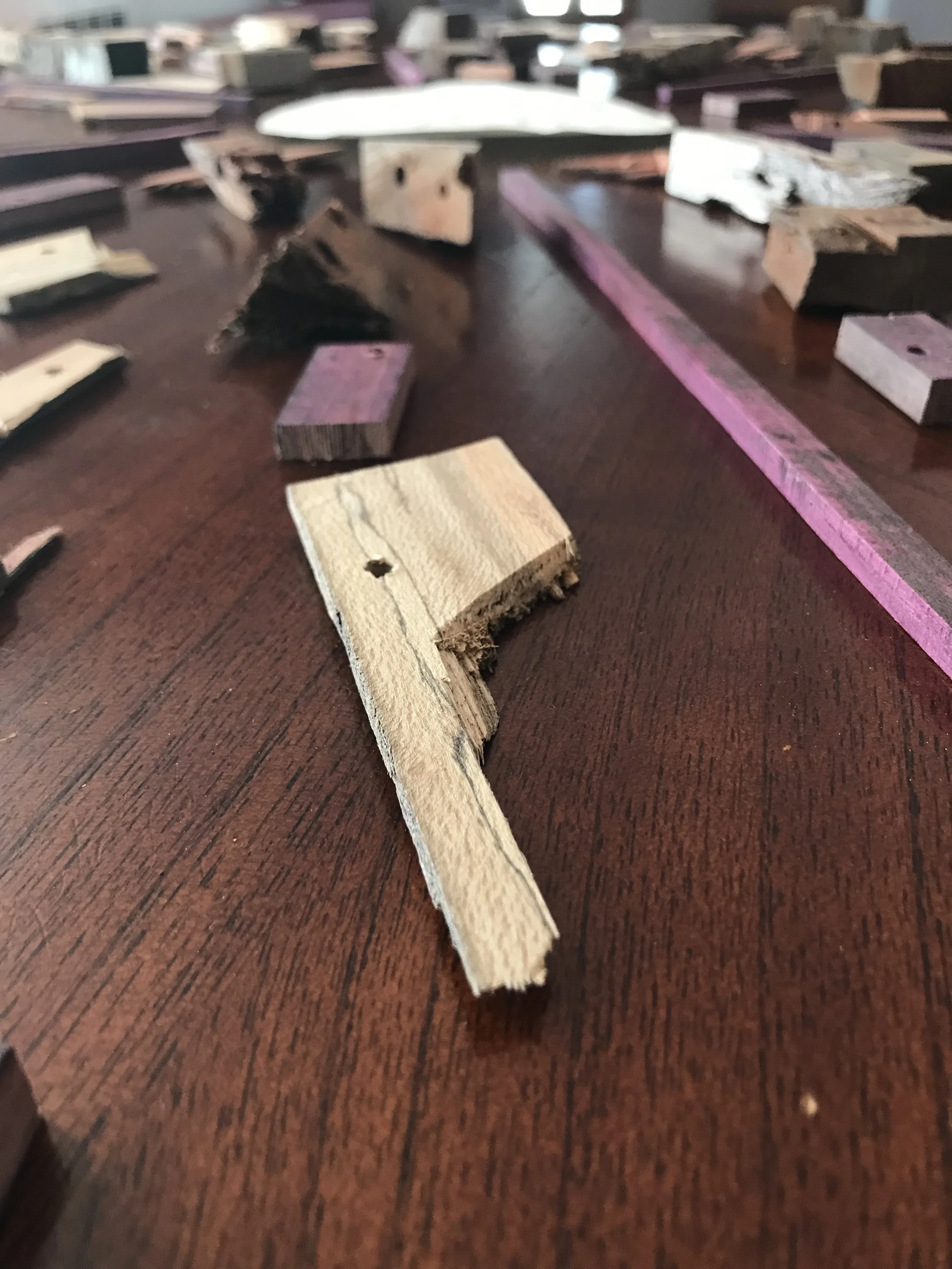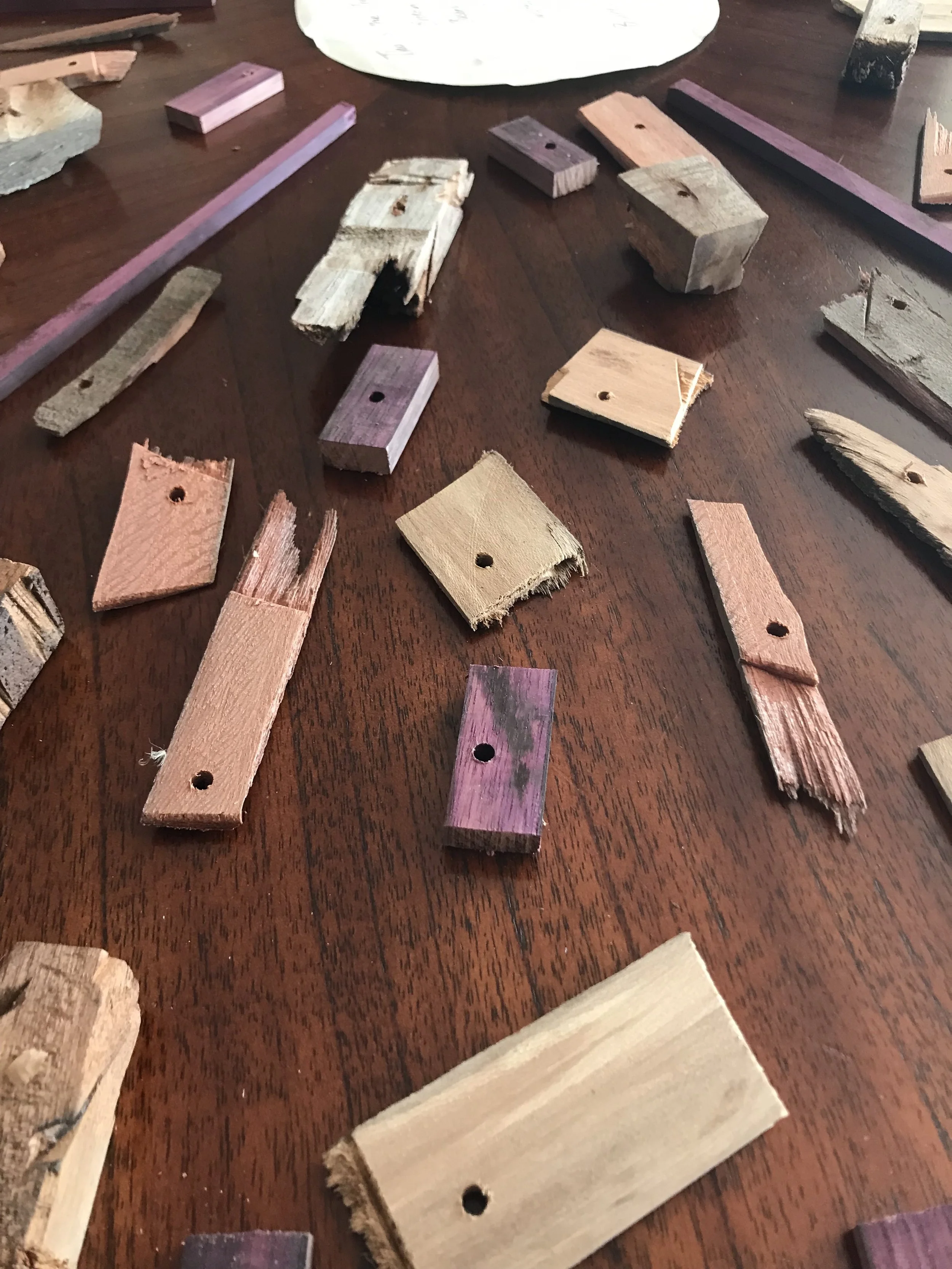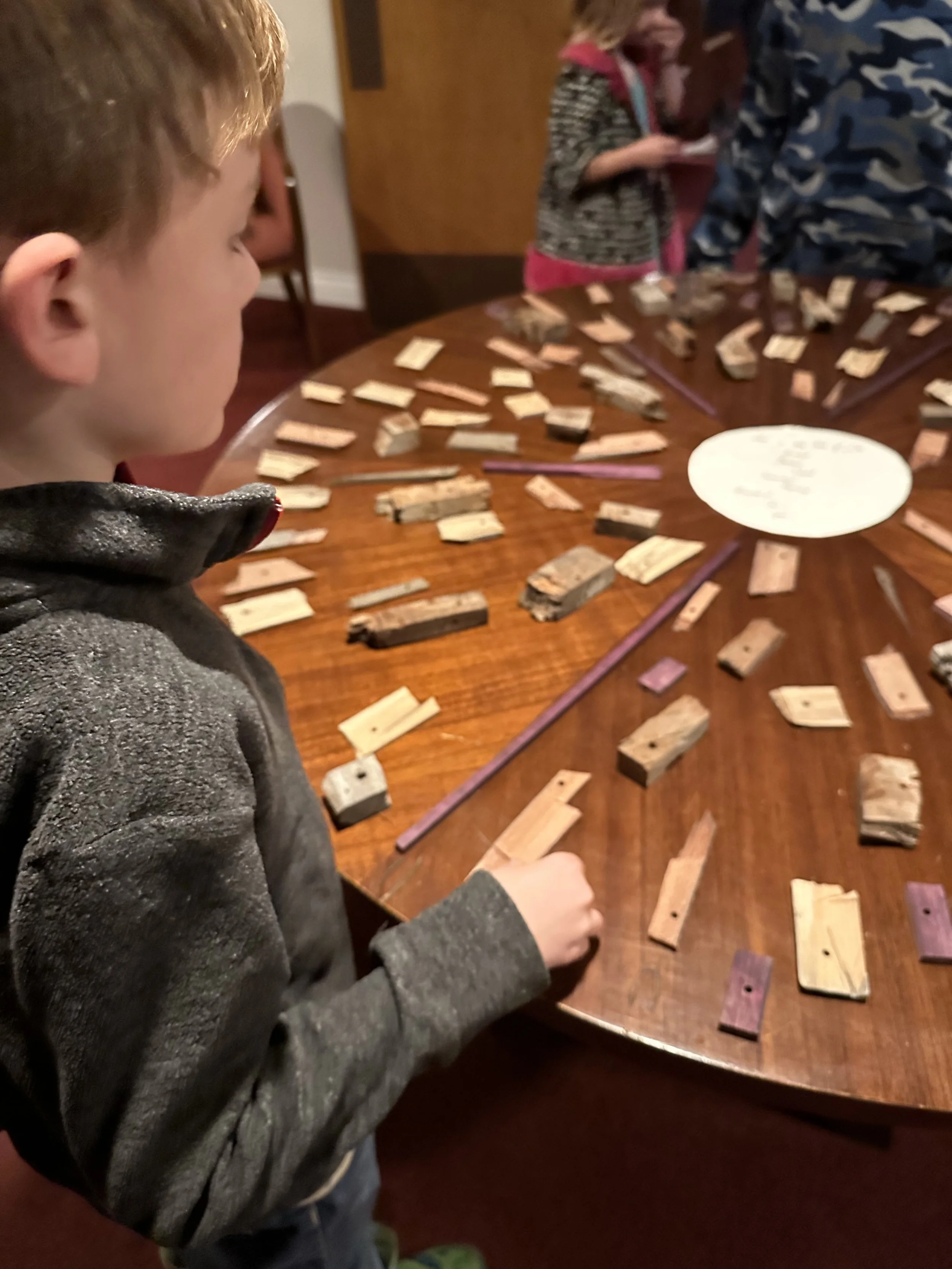Lent & Iconoclasm II
Last year, I created an art installation for my church which offered pieces of wood to those who attended the Ash Wednesday service. If you scroll down, it’s just two posts away. I wanted to revisit that concept this year, but I made updates to it because of the metaphorical richness of woods I’ve been working with over the past year, and which I hoped would enrich both the service, but also the experience of Lent as a time in which we remind ourselves of our subjection to death.
Last year, the installation only featured pieces of mahogany which I variously bashed, burned, and otherwise destroyed into small, coarse, oddly-shaped bits. This year, I included elements of oak, walnut, and purple heart. The oak and walnut came from planks of lumber which I received from a furniture maker up near where my folks live. He had mountains of the stuff which has been sitting outside for years, now. Many of the boards were checkered with cracks, many were warped, and all of them were weather-beaten, all sharing the same ashen appearance that comes from days of sun scorching, storms, and wind. But I knew that once I could get past these exteriors, I would probably find beautiful grain and color underneath. I wasn’t wrong. This paradigm of plain / ugly exterior compared to magnificent, complex interior is one of the abiding themes in the way that the prophets and Gospels invite us to think of the dual nature of Christ as man and God. Isaiah writes, for example,
“Who has believed our message? And to whom has the arm of the LORD been revealed? He grew up before Him like a tender shoot, and like a root out of dry ground. He had no stately form or majesty to attract us, no beauty that we should desire Him. He was despised and rejected by men, a man of sorrows, acquainted with grief. Like one from whom men hide their faces, He was despised, and we esteemed Him not.”
No stately form or majesty to attract us. All the wood I saw was like that. It was, in a way, a small act of faith to collect different planks and take them home, committing myself to the labor of milling and planing them to expose the beauty I hoped to find. But for this installation, I wanted pieces of wood that preserved the juxtaposition of the ugly and the majestic concentrated in a small space. So I ran several of the planks through my table saw, making shims from the weathered sides that I then shattered into smaller pieces.
This interest in the metaphorical poignancy of woodwork like this came about over the last year especially as I was making a liturgical cross for a friend, and decided to use one of the pieces of French oak which had been left outside for years. Like others that I had selected, it was cupped along the edges, forming a gentle valley running along the middle of the board. Initially, I had thought to plane the entire board flat, but as I worked at it and the grain began to emerge, I grew more and more convinced that I ought to leave a weathered scar running right through the middle of the cross.
The contrast between the beautiful, exposed grain of the oak blending toward the rough, scarred, dirty surface running down the middle became another layer of symbolic richness contributing to the cross’ liturgical work.
The other wood I chose to include was purpleheart. Purpleheart, as I’ve come to learn, is fairly unique among wood species because of the way it responds to heat. Heat activates an oil distributed throughout the wood and which causes the wood to turn purple, ranging from amethyst to violet, depending the temperature and duration of exposure. I took several small pieces of purpleheart and, using a blowtorch, heated one side and left the other alone. Throughout Scripture, as with the image of the “refiner’s fire” in Malachi, fire is the element which expresses the potential, promise, and pain of purification. Lent is a season in which we are invited to embrace practices and habits of purification as we, perhaps, do not do throughout the rest of the year. The imagery has definite poetry to it, but anyone who goes through chastening of this sort—the testing, solitude, and bewilderness into which the Spirit leads—generally tends to feel miserable and confused. It’s heard to believe, sometimes, that you’ll truly be better, stronger, or healthier on the other side. The purpleheart pieces, thus, are meant to function as small tokens of that journey and process, where God’s commitments to my flourishing always surpass my own, and result in blessing I cannot imagine.
If you want some of these pieces, it’s the same as last year—I’m not interested in making a profit, just in covering the cost of materials and shipping. Head over to the store, submit an order, and I’ll send you three pieces of wood, along with some nice, itchy garden twine to make a necklace or bracelet. Think of it as sackcloth but, you know, for us modern wimps.







